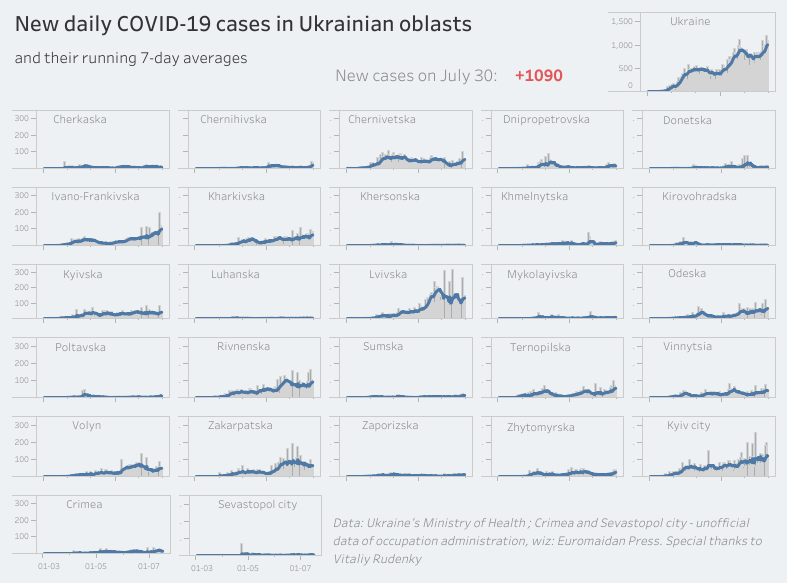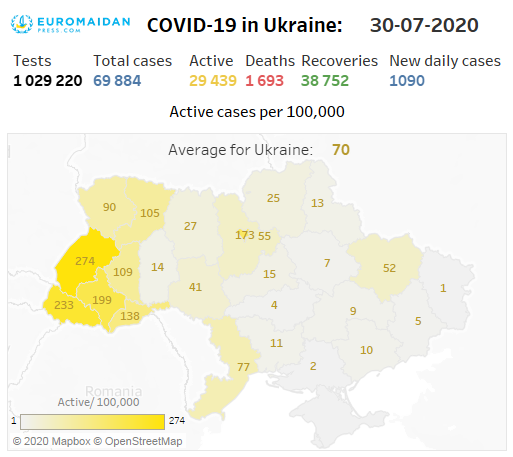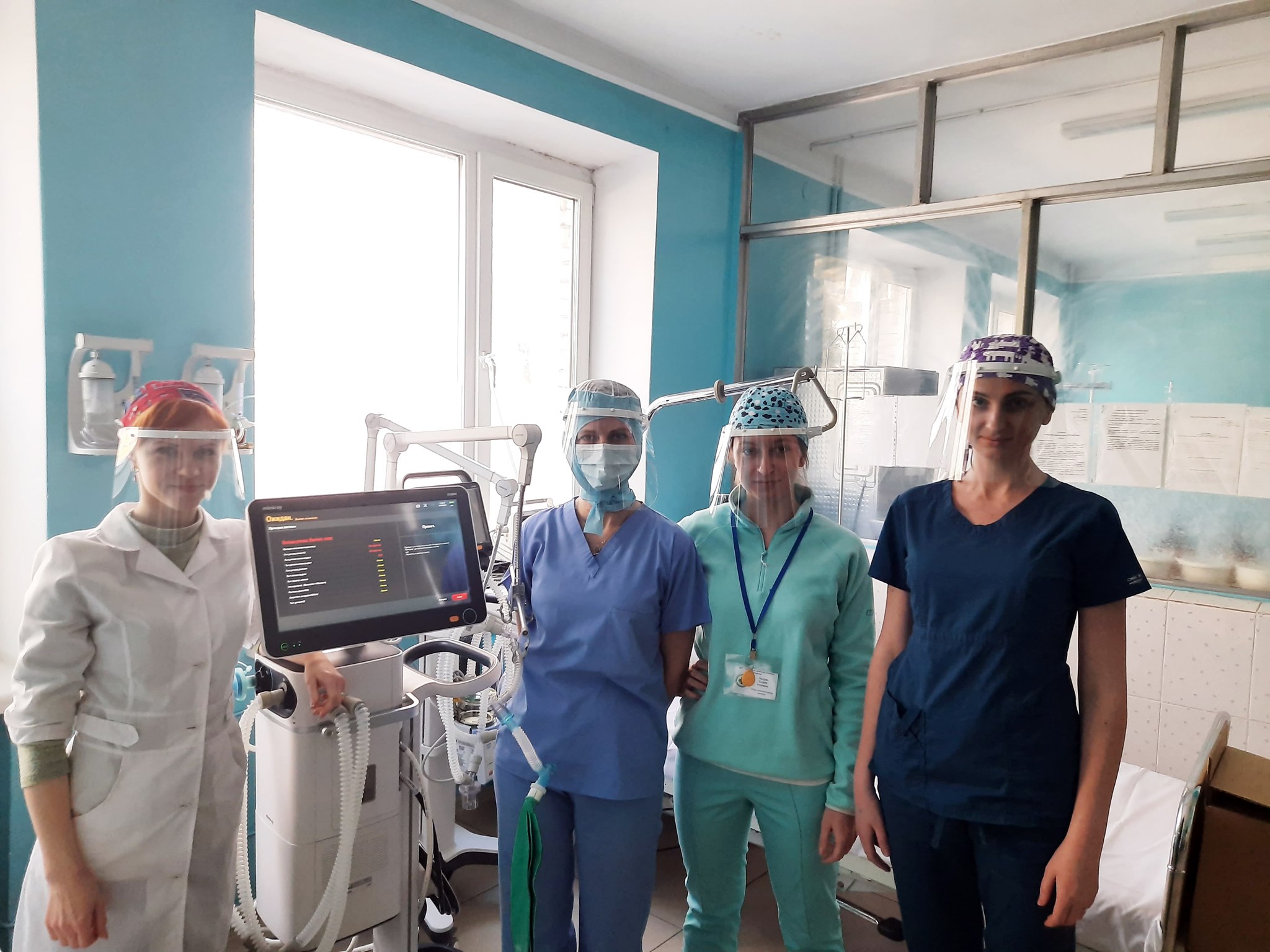At the start of the COVID-19 pandemic, Ukraine got off relatively easy compared to its European neighbors thanks to a swift and severe lockdown. But four months into the pandemic, the public is growing weary of observing coronavirus precautions and daily cases are rising, with a record 1197 cases being registered on 29 July.

Thus, the Ukrainian government prolonged its adaptive quarantine until 31 August, meaning that restrictive measures are applied based on the dynamics of the epidemiological situation in any given region. As of now, COVID-19 growth is the largest in these western-Ukrainian oblasts: Ivano-Franivkiska, Lvivska, Zkarpatska, Rivnenska, Chernivetska and Volynska; as well as the city of Kyiv and, recently, Kharkivska and Odeska oblasts.


If previously an entire oblast was subjected to stricter quarantine measures, including bans on public transport, cultural events, public gatherings, restaurant operation etc., in response to COVID-19 outbreaks, now only the affected regions and cities will be affected.
Oblasts will be monitored for violating at least one of four criteria:
- If more than 50% of hospital beds intended for COVID-19 patients are occupied;
- If there are less than 24 PCR and IFA tests per 100,000 of the population per 7 days;
- If the proportion of positive cases exceeds 11%;
- If the dynamics of new COVID-19 cases exceeds 10%.
If an oblast exceeds one of these criteria, then its districts will be assigned specific statuses. Those contributing under 5% of the violation will be “green” districts, “yellow” districts are those providing 5-20% of the violation, and “red” districts are responsible for over 50% of violation.
A live map has been launched with the relevant color codes for each region.
COVID-19 rules starting from 1 August
Taking this change into account, COVID-19 requirements are the following in Ukraine starting from 1 August 2020:
Throughout entire Ukrainian territory
Masks should be worn in public buildings and transport, documents should be carried in the streets, persons should not leave the places where they are undergoing self-isolation or observation.
In the green zone
Mass events should include no more than 1 person per 5 sq meters, theaters and movie theaters should be no more than 50% full. The number of passengers in public transport should not exceed the seating capacity of the vehicle.
In the yellow zone
Apart from the rules listed above, visits to social protection institutions are restricted;
In the orange zone
Apart from the rules listed above, mass events are allowed with no more than 100 participants and no more than 1 person per 20 sq m, no hospitality businesses except hotels are allowed to operate; restaurants and clubs are not allowed to operate from 24:00 to 7:00 (except delivery and takeout). Groups in education institutions may contain no more than 20 pupils (except for regular schools and kindergartens), planned hospitalizations are suspended, sports clubs may not operate, children’s camps are suspended.
In the red zone
Apart from the rules above, public transport and all education is suspended, culture institutions, restaurants, shopping malls, fitness centers, and non-essential shopping and services are prohibited. The work of social servicing institutions is restricted.
Ukraine enabled a quarantine in response to the coronavirus pandemic on 11 March; since then, it was prolonged, and the initially strict restrictions were eased.
At present, foreigners coming from countries with more than 55 active COVID-19 cases per 100,000 are required to self-isolate for two weeks or do a COVID-19 test. We have mapped the 3-day average of this indicator below.
!function(){“use strict”;window.addEventListener(“message”,(function(a){if(void 0!==a.data[“datawrapper-height”])for(var e in a.data[“datawrapper-height”]){var t=document.getElementById(“datawrapper-chart-“+e)||document.querySelector(“iframe[src*='”+e+”‘]”);t&&(t.style.height=a.data[“datawrapper-height”][e]+”px”)}}))}();
At publication date, Ukraine exceeded this criterion of “safe” countries, with the average number of daily active COVID-19 cases standing at 70 per 100,000.







